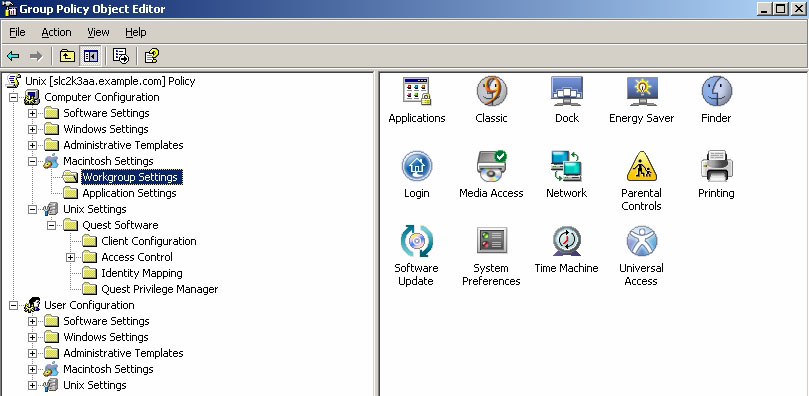
Well, what are you waiting for? Let’s get to work at answering that question! The Bitter Truth As you know, a login script is a script file that contains a sequence of commands to automate our users’ environments. Naturally, the “logon” part of the login script means that the script file is applied during, well, user domain logon. In Active Directory, we can create login scripts by using either a standard “DOS” shell scripts, or we can employ a Windows Script Host (WSH) compatible scripting language such as VBScript or Jscript. Other programming language options are available, but these are by far the most common. We deploy login scripts by using either Group Policy or the user’s domain account properties sheet.
There is a method of offering partial Mac client management and access to other Mac OS X Server services under Active Directory that doesn't require schema modification. The approach is twofold.

The logon script files themselves need to be stored in the NETLOGON share of one of your domain controllers; Active Directory replication ensures that all domain controllers possess a copy of the login script file. The preceding information is all well and good, but where does that help us with respect to applying logon scripts to Mac OS X clients? While Apple has given us rudimentary integration with Active Directory, a Mac system cannot process a DOS shell script or VBScript file—Macs simply do not have the appropriate command interpreters available to them out of the box. In point of fact, Group Policy is utterly irrelevant to the Mac OS X operating system. NOTE: Third-party products exist that do allow for Group Policy processing on Mac OS X systems. Two notable examples are.
Thus, unless we turn to third-party tools, we have to face the unavoidable conclusion that we must maintain a separate login scripts for Mac OX clients. This brings up the important questions, “Okay, but how do I accomplish this goal?” To let the proverbial cat out of the bag, in this article series we shall investigate the following options: • Defining a login item or login hook • Leveraging Open Directory in Mac OS X Server • Using a third-party utility In future installments of this series, we will discuss the second and third bullet points. The focus of this article is to learn how we can create usable login scripts for our Macs with the least amount of effort, at least for the smallest of Mac/Windows environments.
Creating a login item Login items in Mac OS X are directly analogous to Startup Items in Windows. In other words, these are applications that start up automatically after user login and are executed in the context of the current user. To see a user’s login items, open the Accounts Preference pane, select the desired user account, and navigate to the Login Items tab. The simplest way to add a Windows share to a Mac user’s login items list is simply to in another 4sysops.com blog post) and drag the mounted volume to the user’s Login Items list.
For Windows and Mac users the Office 365 service was already a compelling deal, especially the Home tier. You’ll finally be able to manage your subscription on the Microsoft Account portal instead of having to sign into Office.com. Microsoft office for mac more than one computer. All of these changes will not effect the current price structure, and the upgrade will be implemented automatically. Another notable change to Office 365? While there are a wealth of free or cheaper alternatives, Office is still the standard for both business users and consumers — even if that’s sometimes grudgingly admitted.